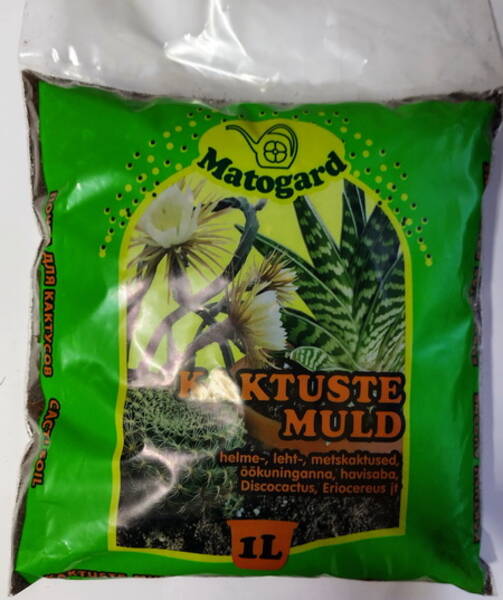Cacti store water in their thickened stems, equipped with numerous spines: subulate, hooked, hairy and bristly. The flowers are unusually beautiful, of various colours 1-15 cm in diameter, and are formed at the top or at the base of the stem.
They are photophilous and thermophilic, they develop well on the windows of the southern exposure, and they are very easy to care for.
During the growth period, cacti are watered when the soil has become dry, but not completely dry. In winter, they do not tolerate excessive humidity, they need good ventilation and lighting, and are kept at a temperature of + 5 + 10 ° C.
Large specimens are watered very rarely, small ones - 2 times a month (with rain or boiled water at room temperature).
The soil substrate for cacti should be loose and well-permeable to water and breath, and not contain fresh compost (besides, the presence of drainage is mandatory).
Seeds are sown in low wide pots, slightly pressed into the soil without falling asleep (they need light to germinate), and covered with glass. Usually, the seeds begin to germinate in 10-14 days at a temperature of +20+25°C.
Emerging shoots are sprayed daily with water. Watering is done through a pallet. After 2-3 months, the plants are seated.
Cacti create attractive and well-growing landscape compositions on the window.

WATER QUALITY.
Problems during irrigation arise not only because of the wrong rhythm of water application but because of its quality. Houseplant substrates (with the exception of orchid soil) have the ability to retain water and nutrients. There is very little soil in the pot, so an excess of mineral elements (lime) or harmful substances (chlorine in city tap water) with regular watering will accumulate in the substrate, and the plant will die. It is best to water the plants with rainwater collected from the countryside. It is neutral and pure.
On sale, there are many special devices for collecting it, which are installed directly on the downpipe. They are practical and inexpensive. But make sure that the roof is clean, and let the water stand for a day. In cities, rainwater should not be used, as it contains harmful substances.
As a rule, tap water is used for irrigation. It is not so bad in quality, but it contains two substances that plants do not like at all: these are lime and chlorine.
Most of the plants grown in the house are acidophiles, therefore, with prolonged watering with tap water, their leaves begin to turn yellow (chlorosis develops). It is enough to add a neutralizer or the juice of half a lemon to a 10-litre watering can to solve this problem. Chlorine comes out of the water naturally within a few hours. Therefore, you can fill the watering can in the evening, and by morning the water will not contain active chlorine. By the way, during this time the water for irrigation will warm up to room temperature, which is also very important.
CORRECT WATERING.
When water enters the substrate during irrigation, the plant does not pounce on it with greed in the very first seconds. First, the substrate must be properly saturated with moisture, and only then the roots will begin their work. It is very important not to forget about this feature, because, for example, a pure peat substrate, which is used by professionals, absorbs moisture very poorly if it dries completely. As a result, your water, water passes through the substrate but does not saturate it. And it's very annoying.
If you are faced with a similar phenomenon, it means that the plant was not watered well (this does not apply to orchids). It is necessary to immerse the pot in water (it can float at first, which proves the extreme dryness of the substrate) for at least half an hour. During this time, its spongy consistency will return to the peat, and it will be saturated with water.
It is best to water infrequently, but abundantly, then often, but little by little. The exception is containers with a water tank. In this case, there are no drainage holes in the pots, and the water remains at the level of the roots, gradually rising to the top. However, such containers are not suitable for all plants.















